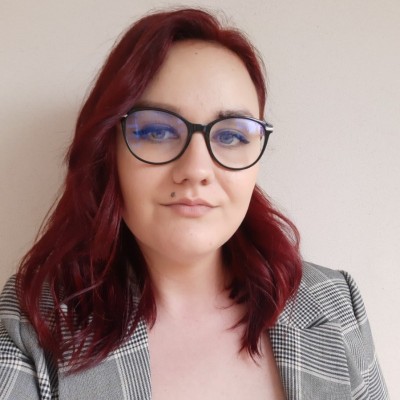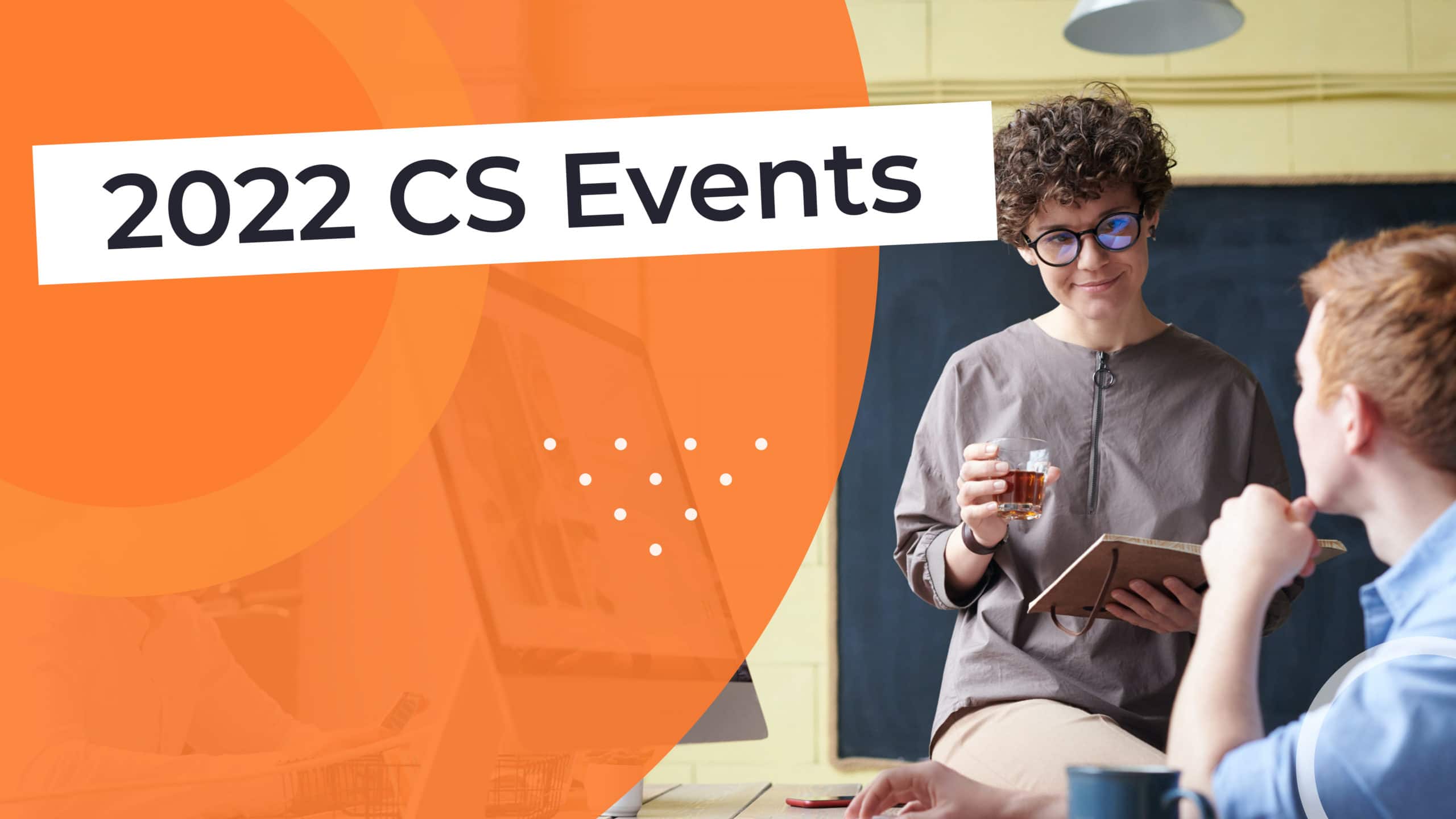Every industry and job comes with a specific set of terms and buzzwords. When we are talking about customer success, it is a combination between the terminology of the tech industry and the customer support department.
In this article, we wanted to remember some of the most important and commonly used terms in the customer success world. Let’s learn to speak customer success with these 40 words and terms.
Customer Success Terminology: A to Z guide

1. Advocacy
You’ve probably heard that your customers can become your best advocates. But what does it mean for a customer to be an advocate? Well, the term advocacy refers to a loyal customer who promotes the product or service he uses to others. When done correctly, customer advocacy leads to stronger brand awareness, increased sales, and stronger self-service.
2. ARR (Annual Recurring Revenue)
The Annual Recurring Revenue is the annual contract value for your customers. ARR is also known as TCV (Total Contract Value), TAV (Total Account Value), ACV (Annual Contract Value), and Annual Subscription Value (ASV). The Annual Recurring Revenue is the way in which recurring revenue business is measured.
For instance, if you sign with a customer for 6 months for $15k the ARR is $30k. Also, if you have a 24-month deal signed for $40k, then the ARR is $20k.
3. Champion
A champion is a power user who loves your product and advocates for it inside the organization and even beyond. A champion can help you promote your product before and post-sale. A champion can also be your point of contact with your customer, depending on their position in the company.
4. Chief Customer Officer (CCO)
The CCO is a management role in the customer success department. A highly experienced manager, the chief customer officer oversees all customer-facing departments, including customer service and CS. The CCO needs to understand the customers and promote a customer-centric culture in the organization.
5. Churn
This is one of the most commonly used terms in customer success. However, everybody wishes to reduce it. Yes, you’ve guessed it. Churn refers to the number of users who’ve stopped using your product or service within a period of time.
One of the main responsibilities of Customer Success professionals is to prevent and reduce churn. However, it is important to know that churn is normal, and it is impossible to stop completely.
Also, there are different types of churn, based on the type of loss:
- customer churn and revenue churn
- voluntary and involuntary churn
- negative churn
If you want to dig deeper into the topic, you can check out our Churn Guide.
6. Concierge onboarding
Providing a concierge onboarding service is a great tool for SaaS businesses. Concierge onboarding is an exceptional and individualized process that revolves around a dedicated “concierge” who passionately caters to customers, providing them with comprehensive guidance to understand and master the product.
Custify’s concierge onboarding process is considered among the best in the CS tool industry, for example.
7. Cross-selling
Also considered part of customer expansion, cross-selling in Customer Success involves recommending additional or complementary products or services to existing customers to amplify their overall value.
For example, if a customer has purchased a project management software package, cross-selling might involve suggesting an add-on for advanced analytics or time-tracking features that integrate seamlessly with the original purchase. This enhances the customer’s experience and meets their evolving needs, while also increasing revenue for the company.
8. Customer Health Score
No, you don’t need to check the blood pressure of your customers. The customer health score refers to a metric used by Customer Success managers to assess the relationship the customer has with the company. It is a good indication of churn or expansion.
The Customer Health Score should include the key metrics that track how well your customers are using the product and if they are satisfied with your services. Some of the metrics you can include are:
- product usage
- usage of your product’s core features and activity in the product
- growth of the account
- length of the relationship
- number of renewals completed
- number of support tickets
- product feedback metrics
If you want to discover more about this metric, you can read our in-depth guide on Customer Health Scores.
9. Customer Journey
The customer journey is a term used by many departments, including marketing and customer success. This term describes the complete experience a customer goes through from first discovering a brand to post-purchase interactions. The 5 stages of the customer’s journey are:
- Awareness
- Consideration
- Decision
- Purchase
- Advocacy
For each stage, it is important to guide the customer. If you want to find out how, here’s an article on the content you should be sharing at every stage of the customer journey.
10. Customer effort score
The Customer Effort Score (CES) is a powerful metric that gauges the level of effort that customers have to invest in order to achieve issue resolution, receive answers to their questions, or successfully complete product exchanges or returns.
To put it simply – CES shows you how hard it is for your customers to receive help from the customer service department.
11. Customer Retention
Simply put, customer retention is the opposite of customer churn. This term refers to the customers who have stuck out with your product or service over a period of time. Customer retention means keeping your clients engaged and happy with your product to avoid them churning.
There are various strategies that can help you increase this metric. In one of our articles, we’ve highlighted 14 customer retention strategies you should consider.
12. Customer Satisfaction (CSAT)
The name speaks for itself: customer satisfaction is a business metric that shows you have “satisfied” or content your customers are with your product, service, or business.
A simple way to find out the CSAT of their customers, businesses need to ask a simple question: “How would you rate your overall satisfaction with the product(s)/service(s) you received from [company name]?”
Find out how to calculate the CSAT and how to increase customer satisfaction from our dedicated article.
13. Customer Success Manager (CSM)
A customer success manager handles customer relationships and proactive engagement. Also, this is a middle-management position which means a CSM is responsible for managing customer success representatives in a company.
If you want to discover more about customer success management or other CS jobs, we created an in-depth career guide for customer success professionals.
14. Down-selling
This is the opposite of upselling. It means to offer your customers a cheaper alternative that better fits their needs. This happens when your customer is downsizing or when they don’t have the necessary resources to pay for a premium version of the product.
15. Executive Business Review (EBR)
An EBR or Executive Business Review is a meeting with stakeholders and C-suite leaders that happens yearly. The purpose of this meeting is to demonstrate the unique value of the product, while also focusing on understanding the unique customer needs and finding a way to better meet those needs.
16. Feedback loop
Receiving feedback from customers is vital for every SaaS business. However, if the feedback is not analyzed and implemented then it is all in vain. To avoid gathering feedback for nothing, it’s best to create a feedback loop. This term refers to the process of continuously collecting and implementing feedback from customers. The process has 4 steps: Collecting feedback -> Analyzing and prioritizing -> Take action -> Check with the customer and ask for feedback.
17. Freemium
Freemium is a commonly used SaaS pricing model. Freemium products provide customers with a basic, fully functioning, free-to-use version of the product. Then, users are given the alternative to upgrade to a paid account for more benefits, such as a better experience, more features, no ads, etc. A few examples of freemium products include social media channels like LinkedIn (with its Premium version) or YouTube (with YouTube Premium).
Interested in finding out more about SaaS pricing models? We’ve prepared a Founder’s Cheat Sheet for SaaS Pricing Models and Strategies.
18. High-touch
A high-touch approach means constantly keeping in touch with your customers and being proactive. The CSM needs to be extra responsive, engage in conversations with the customer, and provide constant help. This type of approach is usually done at the enterprise level.
19. Ideal Customer Profile (ICP)
Building an ICP is one of the most important things you need to do before marketing your product. The ideal customer profile refers to a detailed description of the type of company that stands to benefit the most from your product or service. You can include various characteristics, but some of the most commonly used are:
- industry,
- employee headcount,
- ARR,
- budget,
- geography,
- technology used,
- size of the company’s customer base.
Building the ICP and promoting your product to the right audience will help you increase adoption and reduce customer churn. It’s best to test and adapt along the way, because there’s no perfect ICP, and it can change over time, depending on how your product or company develops.
20. Lifecycle Stages
A lifecycle is the process your customers go through when they are starting to build a relationship with your brand. The 5 stages of the lifecycle are reach, acquisition, conversion, retention, and loyalty.
While lifecycles and customer journeys might seem like similar terms, a lifecycle is a high-level view of the customer relationship. In comparison, the customer journey is a detailed view of the customer experience.
21. Low-Touch
Low-touch is the opposite of high-touch. This means that a company providing a low-touch customer experience is going to allow the customer to discover the product and only provide educational materials. CSMs rarely discuss with the customers, only when a problem arises. This CX approach is more common for SMBs.
22. MRR (Monthly Recurring Revenue)
The monthly recurring revenue is a metric used by SaaS businesses to monitor the total revenue generated in a particular month. While customer success managers need to keep a close eye on MRR, the expansion MRR is a bit more critical for CS professionals since they are in charge of churn reduction.
Expansion MRR means the additional recurring revenue generated in the current month compared to the previous month. Expansion MRR comes from cross-selling and upselling or add-ons.
23. Net Promoter Score (NPS®)
The Net Promoter Score is a metric that measures the chances of a customer recommending your product or service. NPS answers the question: How likely are you to recommend this product/service? Customers can answer with a number from 1 to 10, where 10 is highly likely.
The ratings qualify the customers as:
- 9 or 10 ratings are classified as promoters
- 7 to 8 ratings are passives
- 0 to 6 are detractors.
24. Customer Onboarding
Customer onboarding is the critical initial phase where new users learn how to navigate and find value in your product, setting the stage for a long-term, successful relationship. Done right, it leads to reduced churn and heightened customer satisfaction.
A Customer Success solution like Custify can help CS professionals or onboarding specialists provide a better customer experience during this stage. Discover how Custify can help you improve the onboarding process.
25. OKRs
This is the abbreviation for Objectives and Key results. It is a goal-setting process that allows companies to define measurable goals and objectives.
26. Playbooks
A Customer Success playbook is a structured collection of predetermined steps, approaches, and responsibilities that Customer Success Managers (CSMs) adhere to in order to steer clients toward attaining their objectives in an organized and expandable manner.
Crafted to be proactive and grounded in industry-leading methods, these playbooks can be integrated into Customer Success tools and can be tailored to suit specific accounts or user clusters. They function as a guide for CSMs throughout every phase of the customer voyage, streamlining repeatable and precise customer engagements with the ultimate goal of promoting successful product adoption.
27. Product Adoption
Product adoption is the journey from first interaction to regular usage, ensuring the customer sees ongoing value in the product. To reach product adoption, a customer usually goes through these stages:
Awareness -> Interest -> Evaluation -> Trial -> Adoption
In order for a customer to adopt a product, they need to have a positive experience during the trial stage. Also, a potential customer needs to find value in your product to decide to adopt it.
28. Product Stickiness
This term refers to the process of your customers returning to your product because it is engaging. For example, social media channels have great product stickiness and users tend to return daily to the app or platform. Product stickiness can be measured as the ratio of your product’s daily active users (i.e. DAUs) to monthly active users (i.e. MAUs).
29. Proactive Outreach
What is the main difference between customer service and customer success? The fact that customer success has a proactive approach. The term proactive outreach refers to the fact that CS teams need to reach out to customers even before the customer knows that they need the CS’s help.
How can you do that? With the right CS solution, you can create playbooks that will help you make sure that your customers are looked after and that you reach out before your customers encounter an issue.
30. QBR (Quarterly Business Review)
As its name states, a QBR is a strategic meeting that you do every quarter with your customers. The main objective of this meeting is to discuss the impact of your service or product on your client’s goals, metrics, and overall business relationship.
QBRs provide a lot of insights that CS representatives can use and share with other departments such as Marketing and Product. Quarterly Business Reviews are also known for helping businesses scale and discover what can be improved to better meet the needs of customers.
31. Renewal
This is a term that every CS professional is happy to hear. Renewal refers to a client renewing its contract for another period of time. When customers decide to renew their contract it means that they are satisfied with your product or service and that they discovered the value of it.
32. Segmentation
Segmentation refers to the process of dividing your customers into groups based on common characteristics. For example, you can segment your customer base depending on location, company size, or number of employees. Customer segmentation allows you to engage with customers and understand their needs.
33. Tech-touch
Tech-touch is an engagement model in which most of the support is automated. Companies that have a tech-touch approach send automated onboarding emails, and provide customer educational content such as a knowledge base. A tech-touch approach allows you to provide 24/7 support via chatbots and CSMs can intervene only when there’s an issue.
34. Time-to-value (TTV)
Time to Value (TTV) refers to the length of time from the moment a user signs up, to the moment in which they reach their expected goal or value. TTV measures how long it takes a customer to be satisfied and to find value in your product.
We prepared an in-depth article on the power of Time to value for more info.
35. Trial-to-subscription
This is a metric that indicates how many potential customers have passed the trial period and have decided to get a paid subscription. Many potential customers try out products and then don’t end up getting a subscription. This metric allows you to see how many customers go from free to paying users.
36. Value proposition
Since we mentioned value, let’s also take a look at the value proposition. This is not only used in customer success, and it is more common for marketing. The value proposition is basically what your product does in one sentence.
A value proposition is a clear statement that explains how a product solves a pain point, delivers specific benefits, and tells why it’s better than competing options. It is the essence of your product or service.
37. Value realization
Another important term used in B2B SaaS, value realization refers to the moment in which customers understand how your product helps them achieve their goals. You might also encounter it as the A-ha moment.
It is your responsibility to help customers reach the value realization stage. From value definition to value optimization, the value realization framework leads to better organizational alignment and collaboration for customer success.
38. Upselling
Last but definitely not least, upselling means offering your customer a higher value option to upgrade his initial purchase. For example, most subscription-based apps and products have different plans for different needs. If your customer selected the basic one but it outgrew it, you can upsell it to a more expensive plan that comes with more users or different features. Just like cross-selling, upselling helps you increase expansion MRR and can lead to negative churn.
We prepared a guide about Upselling and Cross-selling to help you increase revenue and customer satisfaction.
39. User Adoption
User adoption refers to the process that new users go through to begin working with your product and commit to using it long-term. The goal is to get customers to use your product more effectively and frequently.
40. YoY (Year-over-year)
YoY or, “Year over year”, measures the growth rate of a certain metric from one year to another. Performing a year-over-year growth analysis helps you see how much your business has expended over that period of time.
Providing customer success one term at a time
If you are just starting out in the customer success department or you are interested in joining the CS profession, we hope our definitions help you shed some light on how these terms are used and what they imply. These are just a few terms used by customer success professionals to navigate this proactive and challenging industry.
Which was the term that confused you when you started out in customer success?




